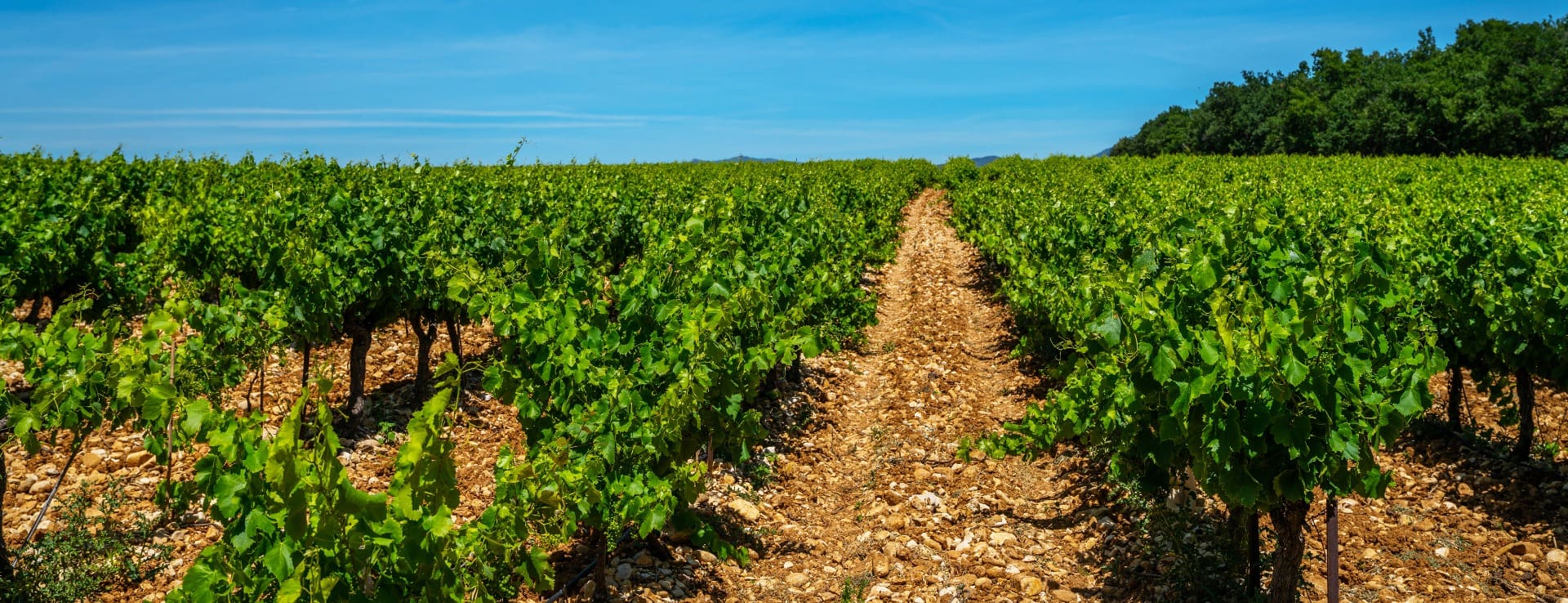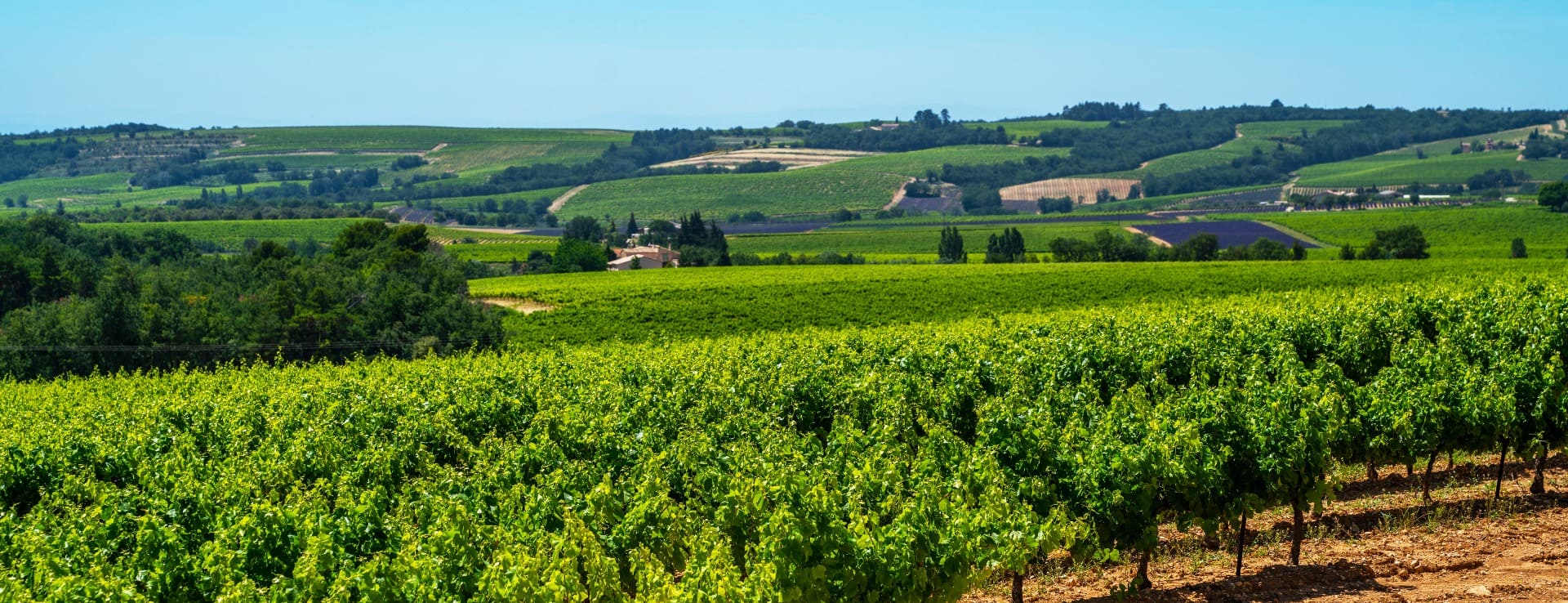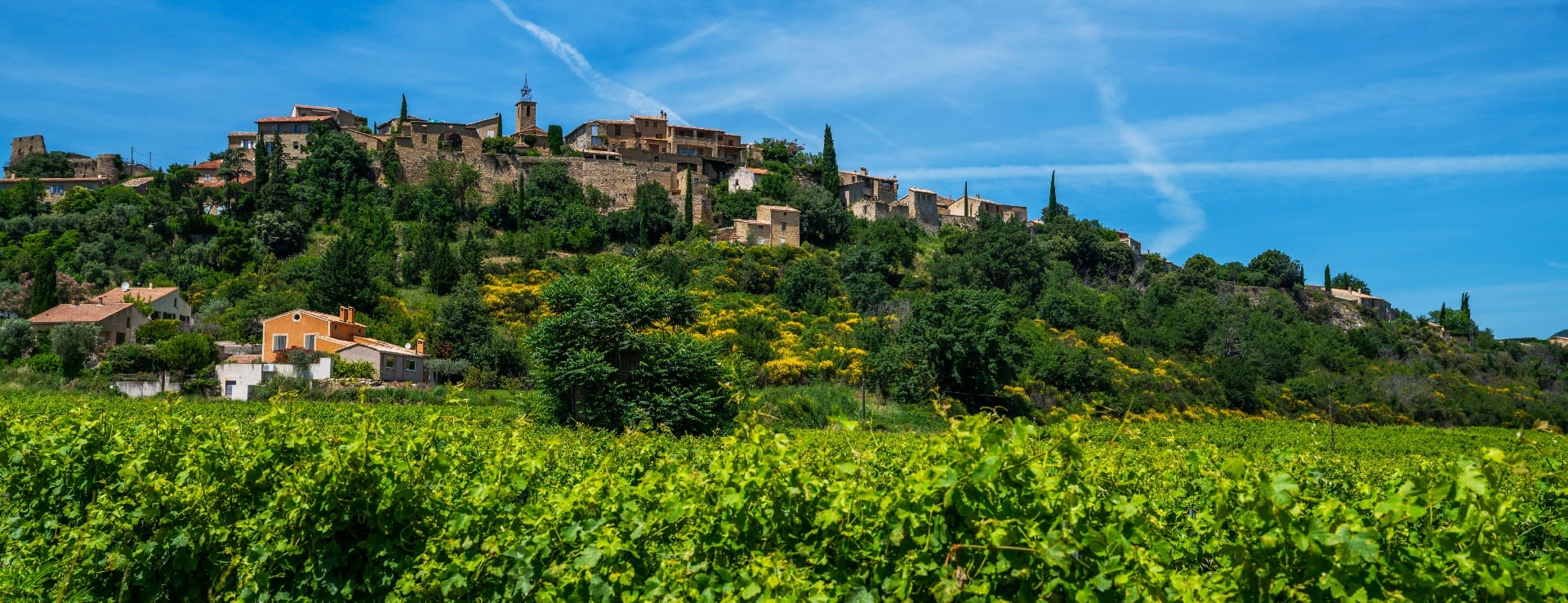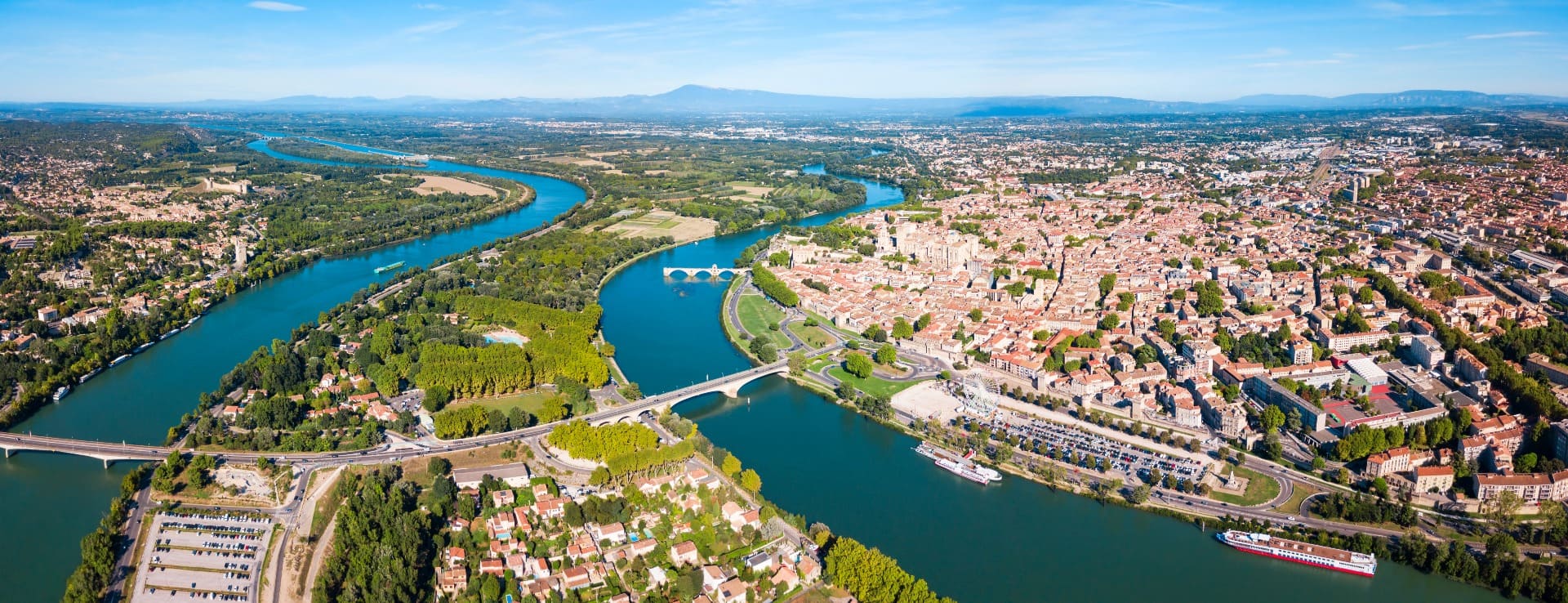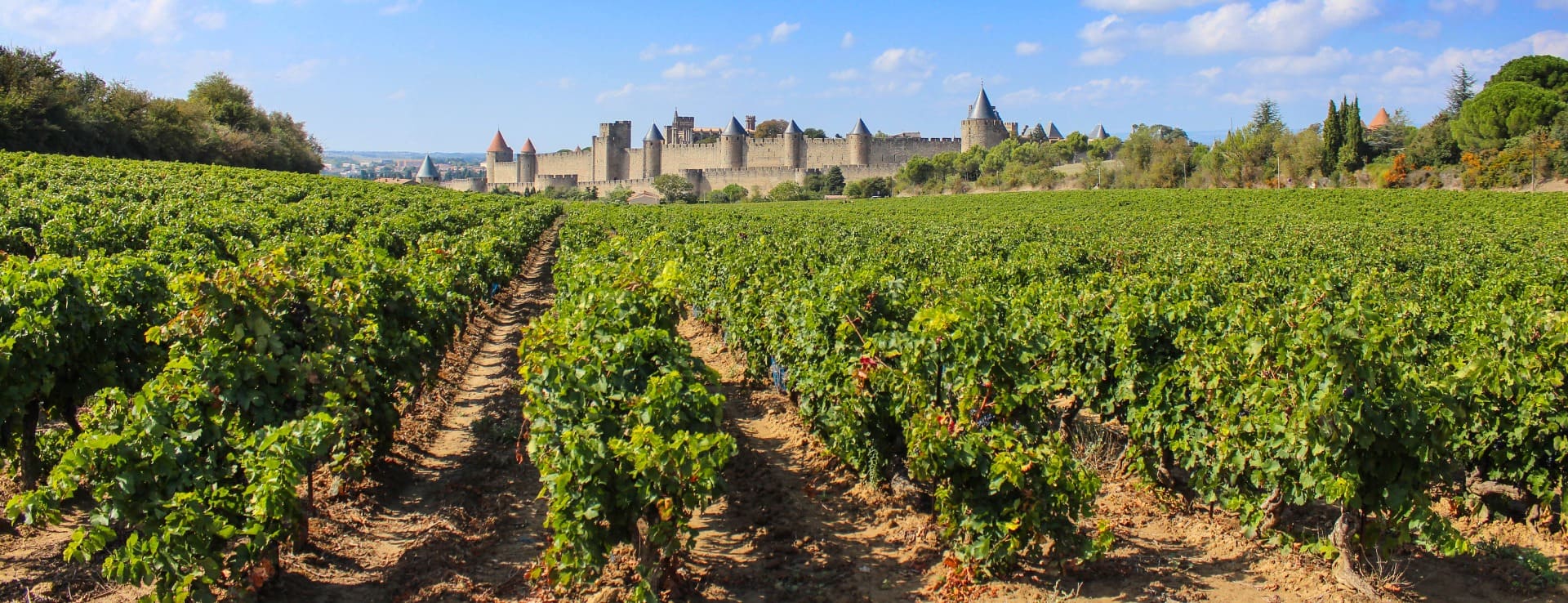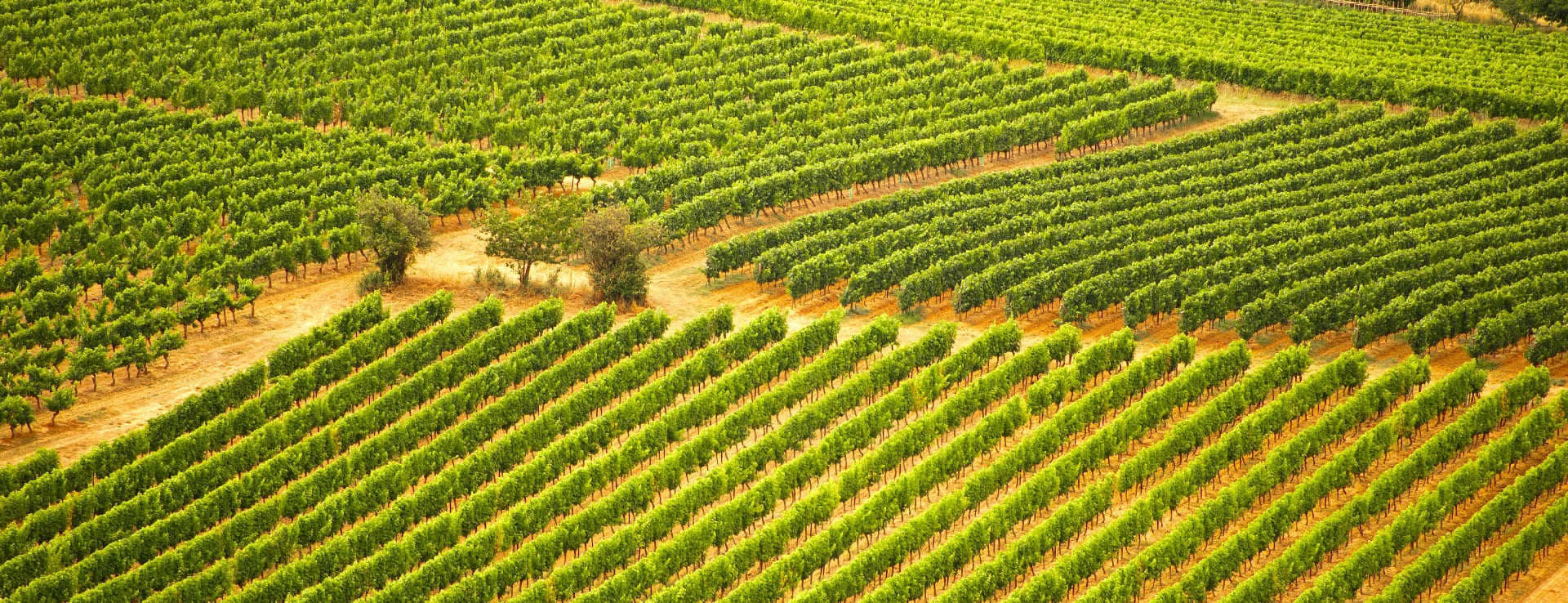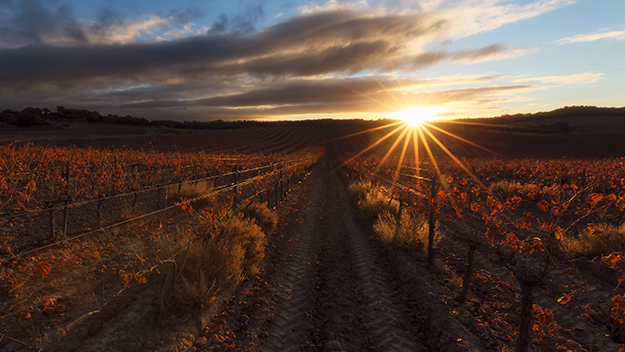Find your winery or vineyard
Infographic of the Region

Southern Rhone Region
Two regional AOCs: Côtes du Rhône and Côtes du Rhône-Villages.
Côtes du Rhône: it is the most important AOC of all because of its large planted vineyard surface, 39,650 ha. Some white wine is produced; however, 95% of the production is red or rosé from Grenache Noir.
Côtes du Rhône-Villages: covers about 9,500 ha and corresponds to certain plots in 95 villages in Gard, Vaucluse, Ardèche and Drôme, with stricter production rules than in Côtes du Rhône. The quality can be very good and the value for money is often interesting. Some villages can include their name to the AOC, which is called Côtes du Rhône-Villages towns like Cairanne, Rastea, Sablet (Vaucluse) and Laudun (Gardenia).
Non-regional AOCs of Bollène south of Avignon: Costières de Nîmes (4,033 ha), Côteaux du Tricastin (2,150 ha), Luberon (3,141 ha, formerly called Côtes du Luberon), Côtes du Vivarais (45 ha), Côtes du Ventoux (6,390 ha) and the wines of Die - Clairette de Die, Crémant de Die, Coteaux de Die (1,474 ha) are AOCs administratively linked to the Rhône Valley vineyard. They do not present homogeneity in their terroirs or in the quality of their wines, but there are talented producers who propose interesting wines.
Communal AOCs:
AOC Tavel: this small vineyard of 950 ha, located on the right bank of the Rhône, opposite Châteauneuf-du-Pape, is solely devoted to rosé wines. Its style is vinous, fleshy, aromatic, pleasant and of varying quality.
AOC Lirac: Tavel's neighbour in the Gard department covers 660 ha and produces fine reds, rosés almost comparable to those of Tavel and sometimes exceptional whites.
AOC Gigondas: on hillsides and gentle slopes descending towards the plain, this AOC of 1,240 ha is a real sunny terroir perfect for Grenache. Long-aged wines are produced in this area, powerful and little known, but with a style full of personality.
AOC Vacqueyras: very comparable to Gigondas in terms of exposure, varieties and style of wines, this AOC of 1,410 ha is finding its place.
AOC Châteauneuf-du-Pape: very extensive, 3,160 ha, the AOC covers five villages and a wide variety of terroirs. Due to its size, the quality is far from the same from one place to another, and different types of vinification and ageing cohabit the area. The best wineries produce wines that are extraordinary for their density and packaging. It is necessary to know how to keep them for a few years in the cellar, a long ageing improves them enormously. The whites have been progressing for some years, but they do not reach the brilliance of the reds.
AOC Muscat-de-Beaume-de-Venise: Known for its naturally sweet Muscat wines, the AOC covers less than 500 ha. On the same terroir, the red wines have obtained their own appellation covering 560 ha, where the famous Trias is located, this is the AOC Beaume-de-Venise.
AOC Vinsobres: elevated to AOC in 2005 with 411 ha, it produces dense and ample wines, but it still lacks the strength to be better known.
Contrary to the vineyards of the Northern Rhône Valley where only four varieties are authorised, the southern AOCs work with a great diversity. For example, Châteauneuf-du-Pape, where up to thirteen varieties can be used.
As for the red varieties, the most important is undoubtedly the red Grenache, which alone represents 65% of the vineyard in the Rhône. A vigorous and fertile variety, it is used in most of the region's AOCs, such as Gigondas (main variety with a minimum of 50% in the blend), Côtes du Rhône (minimum 40%), Côtes du Rhône-Villages (minimum 50%) and is also used in the composition of the famous Châteauneuf-du-Pape.
There is also Syrah, the emblematic variety of the northern Rhône Valley. In the southern part it represents only 17.5% of the surface area. Although it is increasingly used in the southern AOCs (Gigondas, Coteaux du Tricastin, Luberon, Côtes du Ventoux) as well as in certain AOCs in Languedoc-Roussillon, it does not yet compete with Grenache.
Carignan is even more of a minority variety, with only 8.5% of the red varieties. However, it does enter the blend of many wines, such as the red and rosé Côtes du Rhône (maximum 30% of the blend), the red and rosé Côtes du Rhône-Villages (maximum 20% of the blend), but also the Costières-de-Nîmes, the Coteaux du Tricastin, the Luberons and the Côtes-du-Ventoux.
More marginally, the Rhône vineyard also has 5.3% Cinsault and 2.6% Monastrell which is used in the blend of some Gigondas and in Côtes du Rhône-Villages. We also find some Counoise, Muscardin, Camarèse and Vaccarèse and black Picpoul.
The white varieties and therefore the production of white wine is extremely marginal in the Rhône vineyard, representing only 4% of the total surface area. However, the varieties used are not destined for secondary production. The whites of Châteauneuf-du-pape are admirable, the most widespread variety is Grenache Blanc (26.7% of the white wine surface). It gives full-bodied and round wines. It shares supremacy with the Clairette variety (26.7% of the white wine surface). These two varieties are found in the main AOCs producing whites such as Châteauneuf-du-Pape, Lira, Tavel, Vacqueyras, Côtes du Rhône-Villages in whites (associated with Grenache, Bourboulenc and Marsanne and Roussanne in at least 80% of the blend), Côtes du Rhône, Costières de Nîmes, Coteaux du Tricastin, Luberon, Côtes du Ventoux.
More marginally, is Viognier in 12% of the white surface, it is rich in alcohol and gives the wines roundness and floral perfumes of violets, hawthorn and acacia. Then we find the Bourboulenc with 9.2% of the white surface which, in contrast to the Viognier, gives fresh wines with little alcohol. There are other secondary varieties such as Ugni blanc or Marsanne and Roussanne, these two more emblematic of the northern Rhône and less used in the south, then Muscat which is used in the production of sweet natural wines in the AOC Beaume-de-Venise.
Deep robe and intense colours, these are the wines of the Rhône which reveal a southern character. The reds reveal violet reflections, the whites with their golden robe and the rosés with orangey tones like the rosés of Tavel, known since Louis XIV. The nose offers seductive aromas in reds, whites and rosés, notes of red and black fruits, plums, cedar, liquorice, tobacco, thyme, violets, cassis, hazelnut, candied lemon, honey, hawthorn and undergrowth. The olfactory strength that prevails in the great wines of the Rhône is naturally transposed on the palate. They reveal a strong personality like the wines of Cairanne or Vacqueyras.
Discover more wineries and vineyards for sale in these wine regions in France
Subscribe to our mailing list to receive news about wineries and vineyards.

